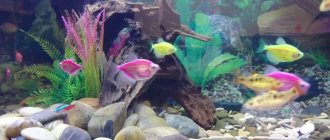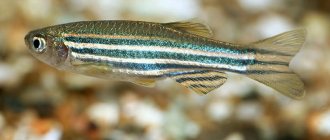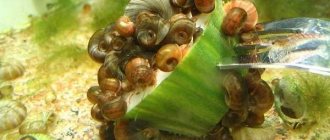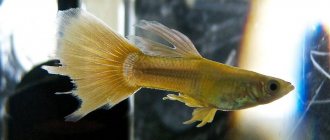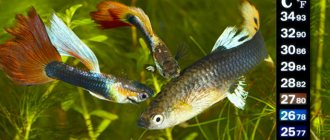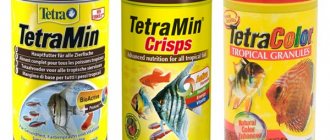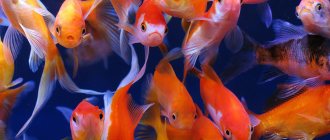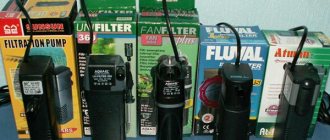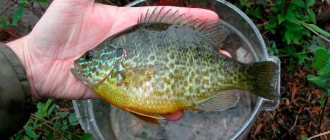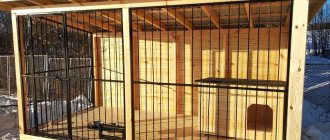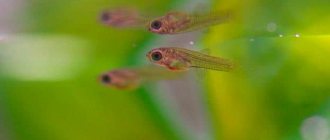Caring for small ponds
Caring for fish in a small aquarium is, on the one hand, easy and simple, but can be a hassle. The fact is that the smaller the tank, the more often you will have to change the water and clean the walls and bottom of the vessel. When choosing the shape of a container, it is preferable to purchase a rectangular tank - it is more convenient to clean, and in standard-shaped reservoirs, aquarium fish feel better and more comfortable.
How to care for miniature vessels:
- fluid is replaced weekly, updating 15–20% of the volume;
- food remains are removed regularly;
- As the container becomes dirty, clean it with a scraper, carefully removing dirt and plaque from the surfaces.
A small aquarium with plants is easier to maintain, so live vegetation is a must for a tiny pond with fish. Flora will help control the amount of nitrates and ammonia, and will also provide a hiding place for pets. In an aquarium without fish or with them, you can plant the following plants:
- lileopsis brasiliensis;
- marsilia blixa;
- Anubias;
- Critocoryne;
- ferns;
- Cladophora.
Equipment such as filtration, lighting and a compressor will also help make care easier. In a small aquarium it is impossible to do without a filter, so experts advise choosing a pump with a sponge to clean the water. Heaters will help maintain the desired temperature in the pond, and the aerator will saturate the water with oxygen. The devices need to be looked after - cleaned of dirt and checked for quality of work.
Content
Caring for your fish includes constant water changes every 4-7 days. Not the entire volume of water is replaced completely at one time, but 1/3 of the liquid. Replacement water is left to stand for at least 2 days to get rid of chlorine. Fill the water gradually, otherwise the soil will wash out and the fish will get scared.
Ecologically clean living environment
The water in any aquarium should be clean, not contaminated with bacteria and harmful microorganisms, of moderate hardness, without chlorine and excess heavy metals, and saturated with oxygen.
To ensure that the water is soft and free of harmful chlorine, it is left to stand in an open container (for example, an enamel bucket or large saucepan) for 1 day, then boiled, cooled to room temperature and poured into the aquarium. In the future, you can simply add distilled water to the aquarium.
It is necessary to plant beneficial algae in the aquarium. Elodea algae fights well against harmful excess heavy metals. They accumulate zinc especially intensively. Vallisneria is good at purifying water from rust.
Where to install?
One of the characteristic advantages of a small 20-liter aquarium is that it can be installed in almost any well-lit corner of the apartment. However, in addition to lighting, the place for the aquarium must meet other, no less important criteria.
So, the support under the tank must be stable and strong . When installing the structure on a support (stand, shelf), you need to make sure that the front part of the tank does not protrude beyond its edge, since in the future this can lead to leaks and even breakage of the walls or bottom.
The support surface must be strong. If it bends or sag over time, this can also cause structural failure.
The location for the aquarium should provide a comfortable and easy view of the home pond. In this case, near the tank there should be power sources (sockets) for connecting the compressor, lamps and other equipment. It is strongly recommended that all electrical sources be equipped with residual current devices in advance.
The aquarium should be positioned in such a way that there is easy access to its rear wall. In the future, this will make it easy to carry out certain actions - for example, replacing background decorations, removing garbage, cleaning the outside of the back wall from dirt.
The aquarium should be installed in a quiet place, away from televisions, radios, and heating appliances. You should not place the tank in the kitchen, where there is almost always a higher air temperature (compared to other rooms) and there are sources of unpleasant odors.
Decorative elements
To create an original design for a 30-liter aquarium, you need to take care of decorative elements. Thanks to decorations, you can decorate an artificial pond in a different style. The following elements are used for these purposes:
- various “wallpapers” for the back wall of the aquarium;
- driftwood;
- shells;
- locks;
- ship models and more.
After recreating the atmosphere of the underwater kingdom, it’s time to think about what kind of fish to put in an artificial pond and how many snails should be in the aquarium.
Settling the aquarium
You can keep several types of fish in an aquarium, but if you wish, it is permissible to limit yourself to one breed, the main thing is not to overpopulate the artificial reservoir. The most common species that are suitable for keeping in a small container are guppies. With a capacity of 30 liters, up to 20 individuals can comfortably exist in the container. In addition, artificial reservoirs are populated with the following species of small fish:
- platies, molinesias and swordtails (up to 10 individuals);
- cockerels and macropods (most often these species are kept alone, but since 30 liters of space is a lot for one individual, you can choose fish that can exist next to them as neighbors);
- catfish (5 individuals each);
- tetras and thorns (no more than 10 fish).
If there is a desire to create a reservoir with a “combined” population, it is recommended to select individuals in this way:
- Sumatran barbs (5 pcs.), mossy barbs (10 pcs.), speckled catfish (3 pcs.);
- neons (10 pcs.), ancitrus catfish (3 pcs.), mossy barbs (5 pcs.), zebrafish (4 pcs.);
- zebrafish (5 pcs.), guppies (10 pcs.), white catfish (3 pcs.);
- mollies (5 pcs.), swordtails (5 pcs.), neons (10 pcs.), ancitrus catfish (3 pcs.).
Often other types of underwater inhabitants are added to the fish. How many snails are allowed in a 30 liter container? As a rule, 10 of these individuals are enough.
Keeping fish and decorating aquariums is a fascinating activity. With some creativity and some effort, you can turn even a small “house” into a real work of art.
Look at the beautiful inhabitants of this small house.
https://youtube.com/watch?v=6ZLQH1nSmCY%3F
Advantages and disadvantages
Among the obvious advantages that 20-liter aquariums have, the following advantages should be noted:
- affordability;
- simplicity in arrangement and technical equipment;
- ease of care;
- a wide selection of small-sized aquarium inhabitants (vertebrates, invertebrates, mollusks) and aquatic plants.
Small-capacity tanks also have their own specific disadvantages. So, their main disadvantages include:
- limited selection of equipment models and decor options;
- rapid contamination of water and tank walls;
- the likelihood of conflicts between the inhabitants of the aquarium (especially if there are excessive numbers of them).
However, the advantages of 20-liter indoor reservoirs are still disproportionately greater. It is with them that experienced aquarists recommend that beginners begin their acquaintance with the world of domestic underwater fauna and flora.
It should also be noted that the vast majority of representatives of the aquarium fauna, recommended for keeping in tanks with a volume of 20 liters, are characterized by unpretentiousness, good health and ease of care. These aquarium inhabitants are quite simple and easy to maintain; they are easy to care for and keep their habitat clean.
How many fish can you put in a 30 liter aquarium?
The larger the fish, the more living space it requires. Therefore, I recommend keeping 10-15 fish in an aquarium with 30-40 liters of water. Introducing fish into the aquarium must also be done thoughtfully. You can only combine fish that are identical in size, behavior and environmental conditions. Cold-water fish should not be placed together with warm-water fish, predatory fish with peaceful ones, etc. An oversight during introduction can cost the life of the fish. The more carefully and better the selection of fish is made, the more harmonious and beautiful the aquarium will be. It should be populated only by young and healthy individuals. Before placing the fish in the aquarium, you need to carefully examine each of them: is it healthy, is its body intact, are its fins transparent and smooth, are there any whitish knotty spots or plaques on it. For warm-water fish, the water in the aquarium should be about plus 20-28 ° C. Cold-water fish mainly live in local reservoirs and require spacious aquariums with artificial aeration. The aquarium must be populated strictly according to plan.
Creating a suitable “fish society” in an aquarium is an important matter. Under no circumstances should large fish be stocked together with small ones.
Such a neighborhood ends with large fish killing their small neighbors. At first, we recommend populating the aquarium with viviparous fish. They are interesting because they can soon give birth to offspring. There won’t be too many worries, but it will be possible to conduct fascinating observations of the growth, habits and life of these fish. Viviparous, warm-water fish. They are unpretentious and do not require special care. These include guppies, swordtails, platies, formosa, and many others. A new aquarium with good water, soil and freshly planted vegetation is not yet an ideal place for fish to live. It will not be easy for some fish species to acclimatize there. It will take a lot of time until the mutual activity of plants, microorganisms and the fish themselves will change the environment in such a way that even capricious, picky fish will feel comfortable in the aquarium. Without biological balance, that is, a stable regime that characterizes the so-called “old” water, fish will drag out a miserable existence. Therefore, we recommend that you first limit yourself to unpretentious fish. Moreover, receiving the first offspring from them will undoubtedly make you want to have a second aquarium for the kids. After some time, it will be possible to start raising spawning fish by placing them in a separate aquarium. Take, for example, the beautiful colorful and striped zebrafish and all their varieties. You can watch them for hours. Labyrinth fish are no less interesting: lalius and labiasis, gourami and cockerels and many other spawning fish, watching which is a pleasure. Cockerels have an interesting feature: while there are few males in the flock, they live peacefully and amicably. But as soon as an extra “man” gets hooked, the real tournament battles begin. They end with the defeat of the weaker ones - the magnificent fins are plucked, the shine of the scales has dimmed. However, bully cockerels are not afraid of either the pain of wounds or defeat. At every opportunity, they again rush at their opponents. What about Chromis Bulti? This amazing fish incubates eggs in its mouth for several days. Like a skilled craftsman, the stickleback builds a nest of an original shape. You can learn a lot of surprising and interesting things by observing fish in your aquarium. When settling it, you should take into account that fish can be schooling. Such fish are bored when alone and do not eat well. Therefore, they must be populated in a flock. Let's give one more piece of advice. When populating an aquarium with goldfish (which many people are fond of), you must keep in mind that the aquarium for them must be much more spacious than usual and must be equipped with artificial aeration.
How many fish can you put in a 30 liter aquarium?
Information in different sources and the opinions of aquarists about how many fish are permissible to house vary greatly. Each aquarium and fish are unique. The purity of the water, the availability of equipment, plants and the size of the scenery all play a role. Follow the general recommendations and monitor the condition of your pets.
Fish suitable for a 30 liter aquarium:
- Guppies In the amount of 12 fish, the fish will be comfortable in the container.
- Neons Maximum body size 4 cm. You can have a school of 12 fish.
- Zebrafish are larger than guppies and neons. They settle in the amount of 6 pieces.
- Tetras For 30 liters 6 tetras are enough. Be careful when moving in; tetras, although peaceful, sometimes chase smaller fish.
- Cardinals Cardinal fish are kept in a school of 6 fish.
- Betta Bettas Small individuals are often chosen for stocking in a round aquarium. It is optimal to keep them in 10 pieces.
- Swordtails, platies, mollies Viviparous fish, similar in temperament and size. Allowed to keep 5 individuals.
- Cherry, scarlet, eight-striped, Sumatran and long-striped barbs are stocked with 3 fish per aquarium. For some species of barbs, gregarious living in a spacious aquarium is mandatory.
- Rasboras Small fish are suitable for a small aquarium. They will feel comfortable in the amount of 12 pieces.
- Norman's Blue Eyes Place these 3cm fish in groups of 12.
- Lyalius A couple of individuals is the optimal amount for 30 liters of water. The maximum size of fish is 8 cm.
- Gourami Species with small sizes (honey, chocolate, dwarf) are housed in groups of 5 individuals. Larger ones (pearl gourami fish, blue, white, marbled or spotted gourami, gold, fiery, neon) are placed in pairs.
- Acanthophthalmus fish of Kühl and Myers A 30-liter aquarium has enough space for one acanthophthalmus fish. As the fish grows, it reaches 10 cm in length.
- Goldfish A species that leaves a lot of waste and requires attention to water quality. With proper care, you can house one aquarium fish.
The container is suitable for catfish:
- Corridors – 2 pcs.
- Algae eaters – 4 pcs.
- Ancistrus – 1 pc.
In addition to fish, you can add a dozen shrimp:
- Yellow.
- Vishnev.
- Japanese ponds.
- Cardinals.
- Crystals.
Or you can add up to 10 snails.
You can always combine options.
Shape and size options
On sale you can find small-sized 20 liter aquariums in a variety of designs, configurations and sizes. The most popular are square and rectangular tanks.
Rectangular aquariums with a capacity of 20 liters are considered a classic version of tanks designed for arranging small home ponds. The most popular among them are designs measuring 38x26x37, 39.5x28x33, 39x27.5x32, 41.5x27.5x20.5 centimeters.
A classic round aquarium will fit organically into the interior of a modern apartment. Typically, the diameter of such tanks varies between 33-35 centimeters, height – between 25-27 centimeters.
Round tanks with frozen air bubbles in the thickness of the glass walls look very impressive.
In the interiors of apartments made in the Art Nouveau or Art Nouveau style, disc-shaped aquariums , shaped like a car wheel, will look very organic. Another interesting option for stylish interiors are tanks, the bottom of which has the shape of a trapezoid or hexagon with rounded edges. The average height of disc-shaped and trapezoidal aquariums for 20 liters usually reaches 38-40, width - 25-35 centimeters.
How many fish should live in a 30 liter aquarium?
When deciding to buy fish, people often think about what size and shape they need for an aquarium. If you want to have your own little world that will please the eye, then you can buy a 30-liter aquarium. This option will be a very good start for beginners. Firstly, such a volume makes it possible to place more fish there than in small aquariums. And secondly, compared to larger options, this aquarium will not take up very much space in your room.
Aquarium inhabitants
So, we have chosen an aquarium, now we need to decide which fish should live in a 30-liter aquarium. This issue should be taken very seriously, because relocation in an aquarium can lead to disastrous consequences. It is advisable to start with fewer fish at first to avoid unnecessary troubles. In an aquarium of this size, it is worth choosing several small schooling fish or a couple of medium-sized ones, for example, honey gouramis or macropods, apistograms or pelvicachromis. In addition to fish, you can place various shrimp, crabs and shellfish. Only small fish should live in a 30-liter aquarium, since large fish will be uncomfortable living in such modest volumes.
Accommodation options
To populate the aquarium, you can choose one of the proposed options: • 3 cockerels, • from 9 to 12 cardinals, • about 15 neons, • 15 Norman blue-eyes, • about 20 guppies, • 20 Endler guppy fish, • a little more than 30 microrasbor fish Now let's look Brief information about each type of fish: Bettas Bettas are a very common type of fish. Males have beautiful fan-shaped fins. Females do not have them, but they have bright colors. The required water temperature is 26 degrees. The size of an adult is 5–6 cm. Cardinal A very interesting and active fish. She likes to have an abundance of plants. Unpretentious to food. The required water temperature is 18-21 degrees. The size of an adult is 2 cm. Neons Quite interesting fish that live in schools. Taking care of them is completely easy. Neons, like cardinals, prefer to have a lot of plants in the aquarium. They need soft water. The required water temperature is 22-25 degrees. The size of an adult is 4 cm. Norman's Blue Eye: A beautiful schooling fish that has bright neon eyes, which gives the aquarium a special look. The fish is mobile and active. The required water temperature is 20-25 degrees. The size of an adult is 3-4 cm Guppy A completely unpretentious species of fish. Males have a brightly colored body and a beautiful tail, females are gray and inconspicuous. They have a high degree of fertility: after only a month of acquiring a female, 20 fry can be seen. They are not picky about water temperature. The size of an adult individual - male - 3-4 cm, female - 6 cm. Endler's guppies Endler's guppies are a type of guppies that have not yet been influenced by selection. These fish are slightly smaller than simple guppies: males grow up to 2-3 cm. Microrasbora A very small fish that is perfect for very small aquariums. This type of fish is unpretentious to water. The required water temperature is 22-28 degrees. The adult size is 2 cm.
KakProsto.ru>
Priming
Soil is used to create an ecosystem. Algae is planted in it and the decorations are strengthened. It is easier to purchase ready-made primer, which is sold in various colors and materials. You are allowed to collect soil yourself, but this option is more suitable for already experienced aquarists.
Filling begins directly with laying the soil. Before placement, the soil should be treated. If the soil is made of natural materials, it should be filtered and calcined to destroy bacteria that harm the fish. The optimal soil thickness for a 20-liter aquarium is 3-4 cm.
Shiny neons
The ideal option for an aquarium of approximately 20 liters is peaceful, shiny neons. Thanks to their unpretentiousness, neon chicks will feel great in a 10-liter vessel, but only if their number consists of 4 individuals. It is worth remembering that this type of fish belongs to schooling aquatic inhabitants, so the aquarium should be a little larger.
Paying attention to the appearance of the fish, the distinctive color feature is a shiny blue horizontal stripe, while the body itself has different colors: blue, black, red and blue. By nature, charming neons are friendly, sociable, very active and playful, not picky and not difficult to keep.
Catfish, goopish and minors will be good neighbors for them.
Danio - rerio
Striped aquarium inhabitants zebrafish - rerio, another ideal option for a 20-liter reservoir. In addition to their cheerful multi-colored color, zebrafish are cheerful, agile and very active. That is why they will become a real decoration for a small aquarium of 20 liters.
They are not picky, as they can live calmly in water with temperatures ranging from 16 to 30 degrees, they love vegetation and are content with good natural light. It is preferable to feed with live food, for example, daphnia, cyclops or live bloodworms. They spawn easily and do best in schools.
Friendly guppies
The most common inhabitant of home aquariums, guppies, do not cause any trouble for their owners, which is why they are considered the best option for beginning aquarists. In addition, guppies, in addition to being unpretentious, have many beautiful colors and are fertile. After just a few weeks of living in a 20-liter aquarium, you can find a huge number of fry, which are quite difficult to catch.
Guppies eat absolutely everything and can survive a week-long hunger strike just fine, tolerate absolutely any temperature and can be content with natural light.
But in order for the color of the fish to acquire a more saturated palette, it is worth installing artificial lighting, paying attention to frequent feeding and periodically changing the water, adding approximately 1.5 liters of water to a 20-liter aquarium once a week.
Cardinals
A beautiful slender cardinal, it is considered one of the few fish that feel great in a small aquarium of 20 liters. Cardinals have a beautiful brown-olive hue with a silver tint. The caudal fin is bright red and has small yellow stripes. The cardinal fish in small spaces in the aquarium can reach approximately 4-5 cm.
Cardinals are friendly fish, which is why it is better to keep them in small schools in the company of red neon, zebrafish or rhodostomus. To make the cardinals feel at home, it is necessary to decorate a small 20-liter pond with vegetation. Dry mixtures and live food are ideal as food.
Norman's Blue Eye
The cute schooling blue-eyed fish is an ideal solution for a small aquarium. Experts are confident that even in a 10-liter vessel these fish will be able to swim to their heart’s content. A distinctive feature of the blue-eye is the bright frame of the eye shell, which glows with neon light, thereby making the atmosphere of the aquarium extremely charming.
The peaceful but slightly shy blue-eye will get along with peaceful fish species, but it is better to keep large inhabitants away. The blue-eye loves various shelters, plant thickets, dark soil and a little free space. It eats almost all types of live food and does not disdain substitutes.
Luxurious cockerels
For beautiful betta fish, owners of luxurious fins and bright colors, a pond of a small number of liters is also ideal. However, to keep these fish it is necessary to create certain conditions. For example, too low or too high a temperature can lead to diseases that will lead to the death of bettas. A mandatory condition is to change the water, approximately several liters weekly,
The fish's daily diet consists of live food. You can use frozen food, or dilute their diet with flatworms or snails. They get along with swordtails, minors, catfish, gouramis, etc. But active fish like guppies, neons, and barbs can inadvertently damage the gorgeous fin of a cockerel, which will lead to fighting fights.
Review of manufacturers
Among the most famous manufacturers of aquariums and aquarium complexes there are both foreign and domestic companies. The largest leaders in this market segment include the following brands:
- Aquael;
- Aquas;
- Tetra.
Aquael is a well-known Polish company that produces both classic rectangular and polygonal, round and panoramic aquariums of various sizes. The manufacturer usually includes sets of auxiliary equipment with tanks - filters, heaters, lamps. The structures also come with products for preparing water and feeding aquarium plants.
Aquas is a Russian manufacturer that produces aquariums for apartments and offices. In the manufacture of its products, the company uses high-quality components and materials of foreign origin - for example, high-strength Pilkington glass (England), German silicone sealants. It is noteworthy that the price of tanks of this brand is quite reasonable.
Tetra is a German brand that produces food for aquarium fauna, aquarium care products, as well as small aquariums with a capacity of 20 to 130 liters. The bodies of 20 liter tanks produced under this brand are presented in 2 colors - dark and light.
Optional equipment
In order for the aquarium to function normally and the residents in it to feel comfortable, it is recommended to equip it with the following equipment:
- Filter
- Compressor
- Lighting
- Heater
The filter purifies the water, thereby reducing the frequency of water changes and maintaining the microclimate. To properly set up a 20-liter aquarium, it is difficult to choose a stationary filter; a remote one is more suitable. When choosing a filter, you should take into account its size - in working condition it should be completely immersed in water so that it does not touch the bottom.
It is also important that the power of the filter matches the volume of water.
An excellent solution is to install a remote filter-aerator in a 20-liter aquarium. This device not only purifies water from contaminants, but also returns it already saturated with oxygen, which makes it possible to avoid installing a compressor.
The compressor is no less important than the filter device. It saturates the water with additional oxygen necessary for its inhabitants and plants.
When choosing a compressor, just like with a filter, you need to take into account its size. A large compressor is not suitable for a small aquarium, because... Excess oxygen can be harmful to underwater inhabitants, as can its lack.
Light is necessary both for the normal life of fish (the change of day and night) and for photosynthesis of plants. For some fish, a table lamp is enough. Still, it is recommended to install adequate lighting. But it should be taken into account that the presence of additional lighting and a heater can lead to overheating of the water, which the fish do not like at all. The optimal solution to this problem is energy-saving lamps. The light should not be constantly on or off; fish need a natural change of time of day. Therefore, it is better if the light is on during the day and off at night.
The optimal water temperature for most fish species is from 22° to 26°. But there are also cool lovers (for example, aquarium goldfish) who prefer from 18 to 23°. There are also heat-loving fish, for which a temperature of 27-30° is more suitable. Therefore, the installation of the heater is determined by the room temperature and the type of underwater inhabitants.
Almost any heater can be installed, the main thing is not to forget to monitor the temperature. The device should not be left on constantly, otherwise the water will quickly overheat. In order to monitor the temperature, it is recommended to install a thermometer or a heater equipped with thermoregulation. Such equipment independently monitors and adjusts the water temperature.
Decor
When designing a 20-liter aquarium, consider the small size of the tank. Extra decorations and dense plants take away the space necessary for fish to live. Therefore, choose small decorative items, place them on the sides, and not in the central part. Suitable for decoration:
- Small stones.
- Snags, tree branches.
- Not overgrowing plants or mosses.
Take a look at this post on Instagram
Addition, expansion ranchu.goldfish (@ranchu.goldfish) Sich 27, 2019 about 2:51 PST
Which inhabitants are suitable for growing in a 20 liter aquarium?
Fishes. In an artificial reservoir designed for 20 liters of liquid, an aquarist can start:
- Guppies - about 5-6 individuals. The main problem is rapid reproduction, which requires constant removal of fry to avoid overcrowding in the aquarium. Therefore, it is better to have either only males, or 1 female for several males.
- Corydoras catfish - can be kept in schools (from 3 to 5 individuals). These fish are peaceful and friendly, and therefore get along well even in a small space. The main thing is that there are no sharp stones or other decorative elements in the aquarium that could cause injury to these sensitive fish.
- Blue neon fish, neon blue-eyed fish - about 4 representatives. These small fish are beautiful and pleasing to the eye, especially appreciated by exotic lovers.
- Dwarf tetradon - in a small tank you can keep a couple of these pets.
- Cockerels. They need a sufficient amount of free space, so in a small container it is permissible to keep 1 male and about 3 females. However, the proximity of females to males that show obvious aggression is not recommended. Therefore, the aquarist will have to make a choice either in favor of one more beautiful and spectacular male, or to stock several females.
- Danio rerio are small fish suitable for schooling. Up to 20 representatives of this species can get along well in a 20 liter aquarium.
- Micro-dispersal is an ideal option for nano-aquariums. The size of an adult does not exceed 2 cm. In addition, these fish are undemanding in terms of care and indicators of the aquatic environment. They can be kept in flocks (about 20-25 individuals).
Snails and mollusks. They can join the main aquarium inhabitants, but in minimal quantities.
Shrimpman. In such a reservoir you can grow some types of ornamental shrimp:
- Crystal is distinguished by its bright color and unpretentiousness, as well as its small size, and therefore is excellent even for flock keeping.
- The cardinal is a luxurious and beautiful shrimp that requires care and attention. It is not recommended for beginners to start.
- Cherry - perfect for growing in a small artificial pond, since its size is no more than 3 cm.
- The yellow shrimp is small and unpretentious, but needs proper and frequent feeding. Otherwise, it begins to destroy the green spaces in the aquarium.
- Pond Japanese (amano). A fairly large shrimp, the size of which can reach 6 cm. They do not reproduce well in an artificial environment, so it is better to keep them in small schools.
Number of shrimp. A 20-liter aquarium can contain up to 50 small shrimp. As for large individuals, their number should not exceed 10-20. You can also raise shrimp in the same tank with small and peaceful fish. In this case, the permissible quantity is reduced by 2 times (about 25 small shrimp or 5 large ones).
A 20 liter aquarium, although not too large, is excellent for growing a fairly large number of varieties of plant crops, shrimp and ornamental fish. The main thing is to properly equip the artificial reservoir and avoid its overpopulation.
Soil selection
Soil plays an important role in maintaining optimal parameters of the aquatic environment in tanks of different sizes. Soil of suitable volume and fraction promotes the formation of beneficial bacteria that process the waste products of the inhabitants of the aquatic world. For a 20-liter aquarium (also called a nano-aquarium), the best option is nutritious soil, which can be purchased in specialized stores.
The benefits of soil . Compositions such as Dennerle, ADA, etc. improve water quality, activate the growth of beneficial microflora, create optimal conditions for the growth of green spaces, especially before introducing fish into the aquarium for the first time. The only drawback of such soil can be considered its rather high cost. An alternative is fine soil, such as crushed pebbles, quartz, sand, basalt or granite chips.
Laying and quantity.
It is important that the soil covers the bottom of the artificial reservoir by approximately 30 cm.
For a 20 liter aquarium you will need from 3 to 5 kg of soil (depending on the specific type of soil).
Factors that determine the number of fish in an aquarium
The most important limiting factor is the oxygen content of the water. Plants and technical means (as additional sources of this gas) make it possible to increase the density of fish stocking.
It’s easy to determine its limit: if the fish try to spend most of their time near the surface, frantically swallowing air (with high-quality aeration!), then you have overpopulation.
At the same time, you need to check the temperature of the water, since when it increases, oxygen dissolves less well in water.
The next factor is the number, size, weight, age, feeding activity and growth rate of the fish.
The larger the individual, the more secretions it produces. They, as well as leftover food, decompose and release toxic ammonia. If there are too many fish, then it simply will not have time to be processed and will poison the aquarium. The acceptable number of fish can be determined by using good tests to conduct a chemical analysis of the water for the content of nitrogen, ammonia, ammonium, nitrites, nitrates and analyzing the results.
It is important whether there is soil in the aquarium, what quality it is and in what quantity. Are there living plants and what type are they? Is filtering equipment used and what kind; how often the aquarium is maintained (water is changed, soil is cleaned, etc.).
How often and in what quantities is food given, what is its quality and chemical composition, what percentage of the fish eat it.
There are other, but not so important factors.
Vegetation
After placing the soil and filling it with water, we design the aquarium.
Plants are needed not only for beauty. They perform two important functions. Firstly, they release additional oxygen, which is necessary for a small aquarium if there is no artificial aeration of the water. Secondly, algae serve as a shelter for small fish and will perfectly hide the equipment installed in the aquarium so that it does not interfere with admiring the underwater world.
It is worth considering that live plants for a small aquarium require proper maintenance, otherwise they may get sick, which also applies to fish diseases. To avoid this, you can replace the plants with artificial ones. They look no worse and require virtually no maintenance.
Aquarium equipment
To maintain the correct biobalance, you need to know how to properly set up a 10 liter aquarium and what equipment will be optimal for it:
Filters should be small and compact.
It is recommended to give preference to external models that are fixed on the outer wall of an artificial reservoir. It is important to pay attention to the power indicators - they should be minimal so as not to create an excessively intense current in a small space. It is recommended to use filters for no more than 2 hours at a time, after which they need to be turned off for a while.
Compressors – required when keeping fish that require increased amounts of oxygen. Preference is given to miniature models.
Moreover, it is not worth keeping the compressor on all the time; it is enough to connect it for an hour 1-2 times throughout the day.
Lighting. The choice of lighting fixtures should be approached with particular care. Both fish and green spaces need additional lighting. But in a small aquarium with a volume of 10 liters, too powerful lamps and internal illuminators will lead to overheating of the water, which is extremely dangerous for the inhabitants of the tank. The best option would be external pendant lamps equipped with a fluorescent lamp.
A heater is required in exceptional cases, since when kept at home, the temperature in the aquarium is already normal. If there is no heating in winter or if you keep tropical fish, you can use heaters. But they must have a minimum degree of power to avoid overheating of the aquatic environment. When using a heater, you will definitely need a thermometer to monitor temperature changes.
Following these simple recommendations will help maintain optimal parameters of the aquatic environment in the nano-aquarium and create comfortable conditions for the fish and plants living in it.
Green spaces
Despite the fact that a 20 liter container does not have a very large area, there are a large number of aquatic and surface crops suitable for growing in it:
- all varieties of aquatic moss;
- small subspecies of Cryptocrine;
- long-stemmed - diandra, rotala, bonsai, sitnyag.
Ferns, Anubias, and all types of Bucephalandra will look good. These plants are characterized by slow growth and do not require too intense lighting, and therefore are considered ideal for growing in nano-aquariums.
Equipment
The care and maintenance of a compact 20 liter aquarium is difficult to maintain without special equipment.
Lighting
Daylight alone is not enough for fish, so additional lighting is built into the aquarium lid, attached to the walls, or hanging lamps are used. Using lighting devices, daylight hours are created. Inhabitants are harmed by both short daylight hours and constant light.
To illuminate small aquariums, choose energy-saving lamps or fluorescent lamps.
The danger of lighting a 20-liter aquarium is the possible overheating of the water and rapid temperature changes. To prevent this, monitor the thermometer and adjust the height and timing of the light source.
Compressor
Compressors are devices designed for aeration and saturation of water with oxygen in aquariums.
For a small aquarium, it is important to choose the correct hose length. If you select the wrong hose, too short or too long, the compressor will not work at full capacity.
Compressors designed for large containers are also not suitable. This threatens oxygen oversaturation, which is harmful for fish, and noise.
Heater and thermometer
Most residents feel comfortable at a temperature of 24-26 degrees, so set the heater to this temperature. The heater is placed completely in the water. It is advisable to purchase heaters with self-regulation of water temperature, because a small volume can easily be overheated.
The thermometer is attached to the wall of the aquarium in the water. It is not recommended to mount it from the outside, because the air temperature disrupts and changes the thermometer readings.
Filter
Aquarium filters are devices for purifying water in an aquarium. Most filters are designed for large aquariums. Therefore, for a compact tank, buy remote filters with aerators.
Conditions for the filter:
- The filter does not touch the bottom.
- The filter is completely immersed in liquid.
- The volume of water corresponds to the power of the filter.
To prevent the filter from interfering with admiring the inhabitants, hide it in algae, moss, ferns and other plants.
Water
For a small tank, it is important to keep the water clean. Due to its volume, the water quickly becomes polluted and poisons the inhabitants. To maintain cleanliness, purchase an additional container in which the replacement water will settle. If the option of settling the water is not suitable, then pet stores sell special products that, when added, make the water suitable for fish.
In a small tank, water evaporates quickly, so add water if necessary. Monitor the water level daily.
